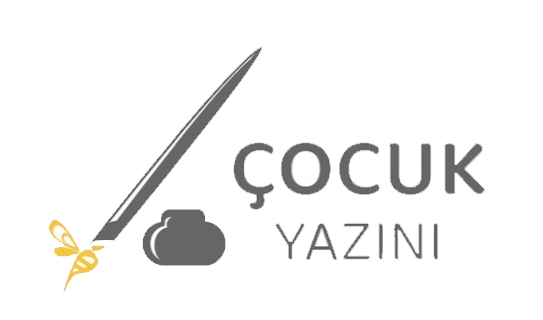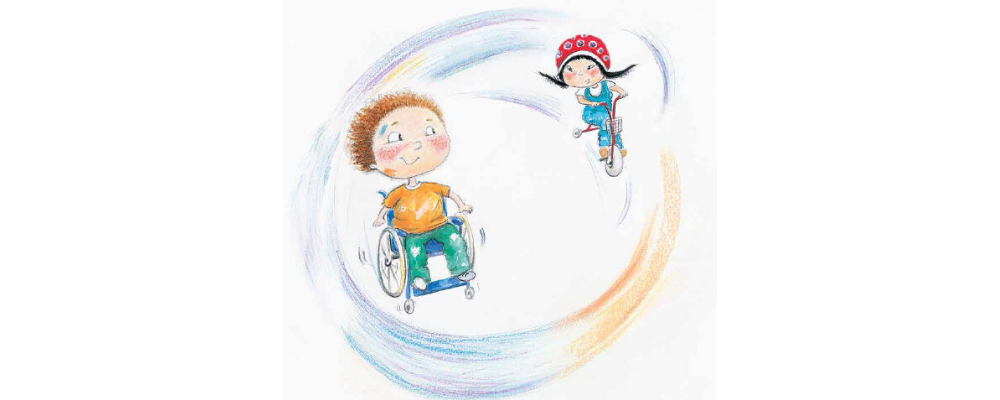There are numerous ways to talk about the same thing and that is the magic of literature. Yet when it comes to disability, it becomes hard to catch the different and literary one.
There are numerous ways to talk about the same thing and that is the magic of literature. Yet when it comes to disability, it becomes hard to catch the different and literary one. Ali the Lame and Shushu, John and Four-wheels are written on the same subject but they tell different things to the reader. Both of these books are about physical disability. Serpil Uyars’s work, Ali the Lame, is published in 1993 and the author utters the problems of disabled children in social life. Ali, as a disabled child, has difficulty in walking since one of his feet is less developed than the other one. One day, when he arrives late to school; his classmates mock him. The teacher witnesses this insult and wants to teach these children a lesson. She wants to highlights that even if one’s ears are stuffed with something, he can sing just like a student, who cannot use his hands, can be good at gymnastics. After showing these examples concretely, she reaches a conclusion: having a physical disability is not an obstacle for people to develop other skills. S/he emphasizes that Ali is skilled in writing good stories, and after that day, his friends call him “Ali the Storyteller” instead of “Ali the Lame”.
Shushu, John and Four-wheels, which is written by Yıldıray Karakiya and illustrated by Başak Günaçan, is published in 2014 as the sequel of Shushu and Her Three-wheels. This time we read Shushu’s and her famous three-wheels adventures with John whom she met at the park. John’s wheel chair- with his own words, “four-wheels”- catches Shushu’s attention and they become friends. These two friends, who are both naughty at an equal level, turn the park upside down quickly. After they together got slapped on the wrist by the man painting the benches in the park, Shushu’s uncle and John’s aunt, they start to clean it up together.
Regarding the difference between these two books’ perspective, the point about the disability is that; while Ali the Lame is the story of the disability and disabled; Shushu, John and Four-wheels is “the story of a child”. In Ali the Lame, it is implied with an instructive tone that disabled people can “also” be helpful in society. The character of teacher emphasizes with a good intent and in a naive way that a person with disabilities can be good at other jobs. However, the author, who builds the character, is missing a point here: by leaving aside disabled Ali’s identity of being a child, it shows the necessity of proving oneself by producing an intellectual or physical side in public. In this case, Ali’s disability status is not conveyed as a “difference” but as an obstacle to be handled.
Ali’s being late for school in the morning is explained through his disability. Yet, it is also possible that Ali may want to sleep more or he was hooked on his cartoon. Or, maybe he had been chasing a cat which he found on his way to school and did not understand how time has passed. All of these are the scenarios in which the childhood is at the center of the narrative. In the narrative, the reason lying behind Ali’s being late is a demonstration of the author’s instructive tone and her direct expressions.
In Shushu, John and Four-wheels, it is the “childhood” what is at the center of the narrative, and the similarities between Shushu and John were emphasized rather than their differences. Shushu and John become friends easily when they first met and they are equal in turning the park inside out together. When they are rebuked for their naughtiness, no one tolerates John and bestows “a privilege” on him; or when they want to correct their mistakes, John has to help Shushu in tidying up things. The friendship between Shushu with three-wheels and John with four-wheels and their childhoods are at the center. John does not have to prove himself due to his disability and strive for social recognition like Ali the Lame.
Disability is one of the topics we discuss today regarding discrimination issue. Likewise other types of discrimination, we see some cases which are produced by a good intent yet could not be constructive in disability discrimination and Ali the Lame is one of them. The first thing catching our eyes about the author’s voice is its instructive feature and its direct expressions. There is a basic distinction between the character of Ali and the characterization of John in Shushu, John and Four-wheels: Ali is initially portrayed as “lame” with his physical disabilities and then he is converted into a “storyteller” to make him a useful citizen. On the contrary, John is only a child and he “resembles” other kids, he is as naughty as others, so an ordinary boy… In Shushu, John and Four-wheels, regarding disability issue with its sensitivity, the author presents a point of view that we exactly need.
Bibliography
Karakiya, Yıldıray ve Başak Günaçan. Şuşu, Can ve Dörtteker. İstanbul: Redhousekidz, 2014.
Ural, Serpil. Aksak Ali. İstanbul: Ya-Pa, 1993

